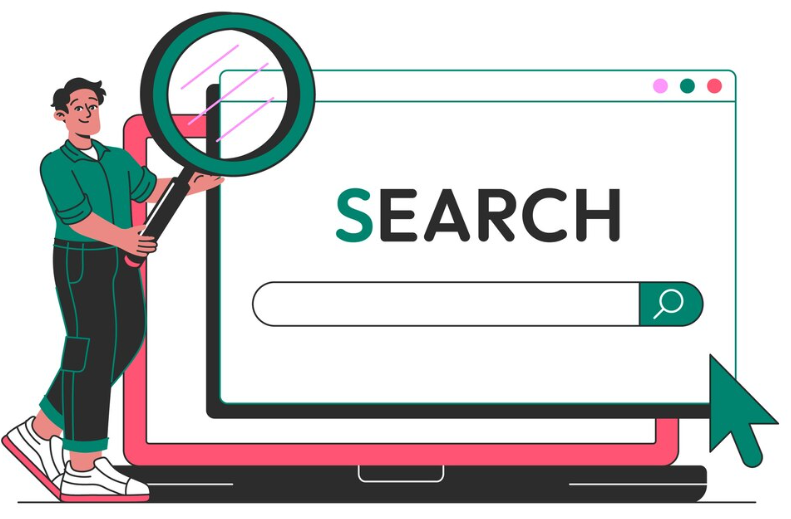User experience (UX) has become a critical ranking factor for local businesses in search engine algorithms, as search engines like Google prioritize websites that offer an exceptional user experience. A website that is easy to navigate, mobile-friendly, and fast-loading keeps visitors engaged and improves search engine rankings. If your website provides a poor UX, visitors are more likely to bounce, which signals to search engines that the site is not valuable, ultimately affecting local search visibility.
For local businesses, optimizing UX isn’t just about aesthetics—it’s about ensuring users can find what they need quickly and easily. Clear calls to action, intuitive navigation, and quick access to local information like contact details and directions can make a big difference. By rethinking the website experience, businesses can improve user satisfaction and search rankings, driving more local traffic and increasing conversions. Prioritizing UX as part of your local SEO strategy is no longer optional; it’s essential for success.
How does user experience influence local business search visibility?
User experience (UX) is vital in influencing local business search visibility by directly impacting how search engines rank websites and how users engage with them. Here’s how UX affects local search visibility:
- Bounce Rates and Engagement: Users remain longer on websites with easy navigation and useful information, lowering bounce rates. Search engines view extended user engagement as a sign of useful and relevant information, which can boost local search ranks.
- Mobile Optimization: Mobile searches dominate local searches; thus, a mobile-friendly website is essential. Google ranks mobile-optimized websites higher because they offer a smooth experience. However, poor mobile UX increases bounce rates and lowers ranks.
- Page Load Speed: FGood UX requires fast-loading pages. Websites that load rapidly improve user experience and meet Google’s Core Web Vitals. Faster loading times can boost search ranks, especially in local queries where users demand instant information.
- Local Search Signals: UX elements such as clear and accurate location information, easy access to business hours, and prominent contact details help search engines better understand and rank a business in local search results. This information improves both the website’s relevance and its authority in the local area.
- Positive Reviews and Trust Signals: Websites that offer an excellent user experience often gain positive reviews, trust signals, and social proof, all of which contribute to a business’s credibility in local search. Search engines value trustworthiness and authority, which are key ranking factors for local SEO.
A well-optimized UX improves user engagement, boosts local search signals, and enhances the overall experience, directly contributing to better search visibility for local businesses.
What role does page layout play in local website ranking
Page layout plays a significant role in local website ranking by directly impacting user experience, search engine optimization (SEO), and engagement metrics. Here’s how page layout influences local website rankings:
- Improved User Experience: A well-organized page structure and easy navigation allow users to access information easily. Local contact info, location, and hours encourage site visitors to stay longer, lowering bounce rates. Google ranks websites that meet consumers’ needs based on user experience.
- Mobile-Friendliness: Mobile searches are common for local searches; thus, a responsive layout is essential for top rankings. Smartphone and tablet users enjoy a smooth surfing experience with a layout that adapts to screen sizes, increasing engagement and search engine results.
- Clear Calls to Action (CTAs): A well-designed page layout ensures that calls to action, like “Contact Us,” “Get Directions,” or “Call Now,” are easily visible. Prominent CTAs increase conversions and engagement, which signals to search engines that the site is relevant and valuable to users, positively impacting local rankings.
- Structured Content: Proper headings, subheadings, and bullet points in the page layout make it easier for users and search engines to digest the content. Search engines use these structural cues to understand better the content and its relevance to local search queries.
- Local SEO Signals: Including important local information such as a clear business name, address, phone number (NAP), and Google My Business (GMB) listing on well-structured pages ensures the website aligns with local SEO best practices. Consistent and easy-to-find NAP details contribute to better local search rankings.
An optimized page layout improves user experience, enhances SEO, and increases engagement, contributing to better local search rankings for businesses.
Why is site speed important for user experience and SEO
Site speed is crucial for user experience and SEO because it directly impacts how users interact with a website and how search engines rank it. Here’s why site speed is so important:
For User Experience:
- Faster Loading Times Improve Engagement: Users anticipate fast page loading, especially on mobile devices. Sites that load slowly frustrate and increase bounce rates. Faster websites keep consumers engaged, encouraging them to explore more pages and increase conversions.
- Reduced Bounce Rates: Slow websites are more likely to cause users to abandon the page before it fully loads. High bounce rates signal to search engines that users aren’t satisfied with the experience, which can negatively impact rankings. A fast site helps retain visitors, improving engagement metrics.
- Mobile User Expectations: With mobile browsing becoming the norm, users expect websites to load swiftly on all devices. Optimizing for speed ensures that mobile visitors have a seamless experience, which is especially important given the growing percentage of local searches happening on mobile.
For SEO:
- Search Engine Ranking Factor: Fast page speed is a Google ranking criterion. Because they improve user experience, faster websites rank higher in SERPs. Google’s algorithms reward websites with quick information access with increased prominence.
- Core Web Vitals: Site speed is part of Google’s Core Web Vitals, a set of metrics used to evaluate a site’s user experience. These metrics, such as Largest Contentful Paint (LCP) and First Input Delay (FID), focus on how fast a page loads and becomes interactive, impacting rankings and user satisfaction.
Site speed is vital in providing a positive user experience and boosting SEO performance. Faster websites lead to better engagement, lower bounce rates, and improved rankings, making site speed a critical factor for success.
How do local businesses benefit from a better website experience?
Local businesses benefit from a better website experience in several ways, as it directly impacts user engagement, conversions, and visibility in local search results. Here’s how:
- Improved User Engagement: A well-designed, user-friendly website keeps visitors on the site longer, reducing bounce rates and increasing time spent exploring services or products. When users find it easy to navigate and access relevant information, they are more likely to engage with the content, ultimately improving overall website performance.
- Higher Conversion Rates: A smooth, intuitive website experience makes it easier for visitors to take desired actions—making a purchase, signing up for a newsletter, or contacting the business. Clear calls to action (CTAs), easy-to-find contact details, and a simple checkout process can significantly boost conversion rates, directly impacting sales and leads for local businesses.
- Better Local Search Rankings: Search engines like Google prioritize websites that offer excellent user experiences, including fast load times, mobile responsiveness, and easy navigation. Local businesses with user-friendly websites are more likely to appear in local search results, increasing their visibility and attracting more local traffic.
- Enhanced Reputation and Trust: A well-organized, fast, and mobile-friendly website fosters trust with visitors. Users are more likely to perceive the business as professional, reliable, and credible, which can lead to better reviews, word-of-mouth recommendations, and repeat customers.
- Competitive Advantage: A well-optimized website can differentiate a business from its competitors in competitive local markets. Businesses prioritizing their website experience are more likely to stand out and attract customers than those with outdated, hard-to-navigate sites.
A better website experience helps local businesses engage more visitors, increase conversions, improve search rankings, and build trust, leading to increased visibility and growth.
Improve Your Website UX to Boost Local Rankings!
Improve your website UX to boost local rankings with MJM Digital Marketing! We optimize user experience to help local businesses improve their online visibility and search engine rankings. A well-designed, user-friendly website enhances customer satisfaction and signals to search engines that your site is valuable and relevant. From mobile optimization and fast load times to intuitive navigation and clear calls to action, we focus on every aspect of UX to ensure your website performs at its best. Contact MJM Digital Marketing today and start improving your local SEO with an exceptional website experience!




